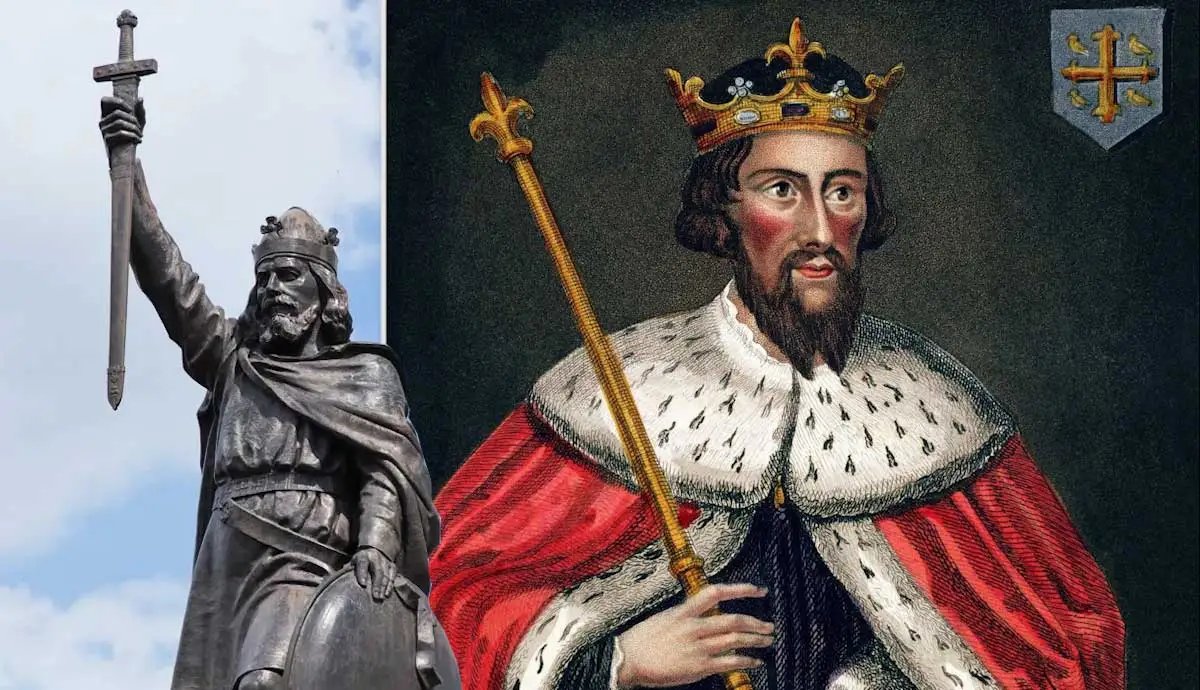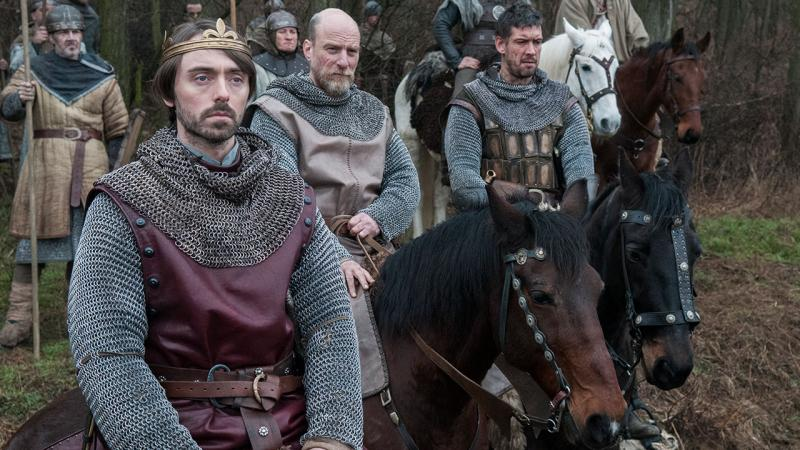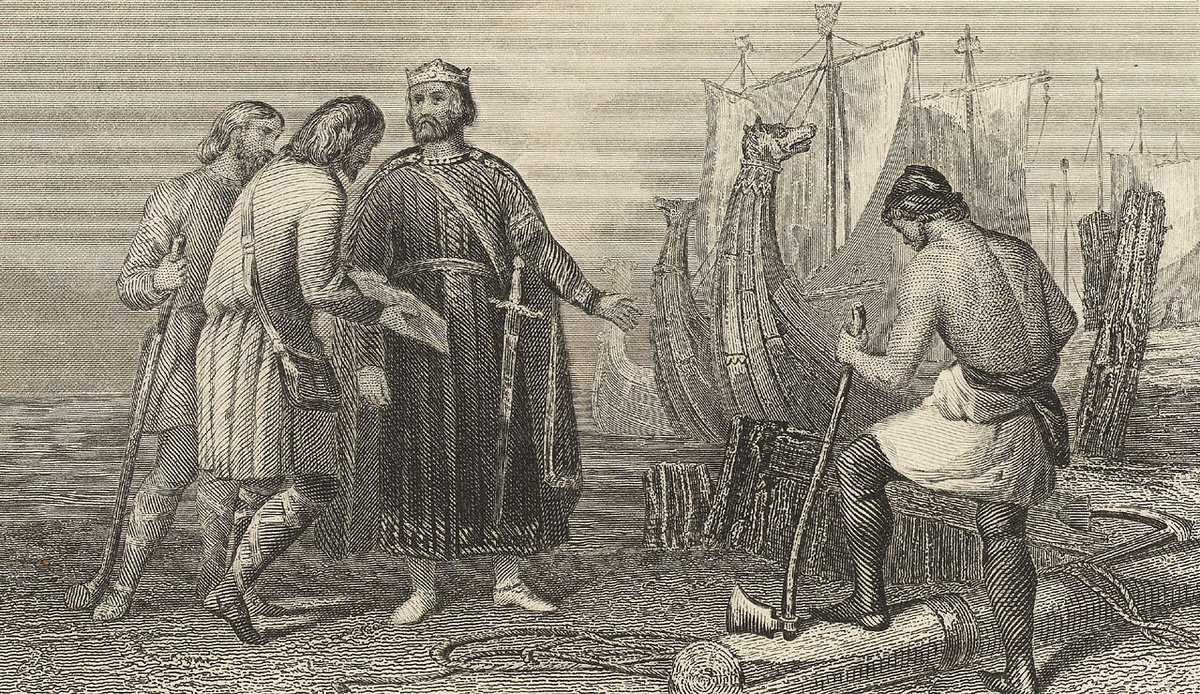Alfred the Great, perhaps the greatest king England has ever had. From promoting learning and literacy, to seeking to unite all of England, to defending against invading Danes.
He is one of mankind's greatest rulers. Here is his story.🧵 https://t.co/SthTCFaL8Ztwitter.com/i/web/status/1…

He is one of mankind's greatest rulers. Here is his story.🧵 https://t.co/SthTCFaL8Ztwitter.com/i/web/status/1…

Alfred was born in 849, in Wantage in the kingdom of Wessex. His father was Æthelwulf, King of Wessex and his wife Osburh. He was the youngest of six children, having 4 brothers and 1 sister. 

Alfred's oldest brother, Æthelstan, was appointed to be sub-king of Kent in 839 he would die in the year 852. Alfred's other 3 brothers would successfully become king's of Wessex. Æthelbald, Æthelberht and Æthelred. 

At the age of 16 in the year 865 when his 18 year old brother Æthelred was king, Alfred was named secundarius by Bishop Asser. He was now a recognized successor to his brother should Æthelred fall in battle. 

In one of his earliest military victories, Alfred and his brother Æthelred defeated the Viking's Great Heathen Army at the Battle of Ashdown. 

The Battle of Ashdown was fought on January 8th, 871. Between the West Saxons led by King Æthelred and Alfred and the invading Vikings, led by Bacgsecg and Halfdan Ragnarsson. 

The Vikings deployed their forces along the top of the ridge and divided their army into two contingents.
Alfred led his men to the battlefield. The Saxons would fight up the ridge against the Vikings, eventually claiming victory in a bloody, costly battle.
Alfred led his men to the battlefield. The Saxons would fight up the ridge against the Vikings, eventually claiming victory in a bloody, costly battle.

In April of 871, King Æthelred died. Alfred would become King of Wessex.
While conducting burial ceremonies for his brother, the Saxon army was defeated by the invading Danes and once more at Wilton in May of that year. Alfred was forced to negotiate and make peace.
While conducting burial ceremonies for his brother, the Saxon army was defeated by the invading Danes and once more at Wilton in May of that year. Alfred was forced to negotiate and make peace.

In 878, Alfred would lead his men to victory in the Battle of Edington between the Kingdom of Wessex and the Danelaw, led by Guthrum.
Alfred's forces numbered around 2,000-6,000 while the Vikings had around 4,000.
Alfred's forces numbered around 2,000-6,000 while the Vikings had around 4,000.

"Fighting ferociously, forming a dense shield-wall against the whole army of the Pagans, and striving long and bravely...at last he [Alfred] gained the victory. He overthrew the Pagans with great slaughter, and smiting the fugitives, he pursued them as far as the fortress." 

The previous quote was written by historian Alfred P. Smyth. A powerful description of the battle that ensued.
Alfred and his forces would claim victory, slaying approximately 2,000 Vikings. They would pursue the remaining forces to the fortress where the Vikings would hide.
Alfred and his forces would claim victory, slaying approximately 2,000 Vikings. They would pursue the remaining forces to the fortress where the Vikings would hide.

The Saxon forces removed all food the Danes would have been able to acquire and would starve them out, taking 2 weeks until the Danes eventually sued for peace.
In agreement, the leader Guthrum would be baptized, adopting the name Aethelstan with Alfred as his godfather.
In agreement, the leader Guthrum would be baptized, adopting the name Aethelstan with Alfred as his godfather.

In accordance with the treaty's terms, Aethelstan, formerly Guthrum would withdraw to East Anglia where he would found his own partly Christian state.
Here below is a still surviving copy of the treaty that King Alfred and Guthrum would sign.
Here below is a still surviving copy of the treaty that King Alfred and Guthrum would sign.

Alfred's brave defense of his nation against the more powerful enemy in the Vikings, while also negotiating peace treaties with them and his societal reforms of his kingdom. Alfred would be awarded the epithet "the Great." Being the only English King to ever possess it. 

Alfred recognized the importance of having a strong navy to defend against Viking naval attacks. He expanded and improved his kingdom's naval capabilities and would become known as the "Father of the English Navy." Constructing a fleet that would exist to repel invaders. 

Alfred's military successes also included his strategic construction of burhs, fortified towns, and strongholds. These defenses provided safety for his people but also created a string of fortified points that made it difficult for Vikings to sack his kingdom unchecked. 

King Alfred's reforms, such as the establishment of a standing army and navy, laid the groundwork for a more organized and prepared defense against Viking raids. 

Alfred's created his own legal code known as "Domboc" or "Dooms," which laid the groundwork for English common law.
This code emphasized justice and fairness for all, regardless of social status. His influence on legal principles can still be seen in modern legal systems.
This code emphasized justice and fairness for all, regardless of social status. His influence on legal principles can still be seen in modern legal systems.

King Alfred's legacy also exists in his promotion of Christianity. Alfred believed that a strong moral foundation was essential for a thriving society. His efforts to support the Church and promote religious education left a lasting mark on English Christianity. 

Alfred also possessed a commitment to learning and education. He recognized the importance of knowledge and actively promoted scholarship. He even translated several Latin works into English, contributing to the dissemination of knowledge. 

Alfred possessed a vision for a unified England. This being a driving force during his rule he negotiated treaties with Viking leaders, leading to the establishment of the Danelaw - an area of Viking rule in England. 

Alfred the Great would die in 899 on the 26th of October. Historians believe that his death was likely the result of complications from Crohn's Disease, which had plagued him throughout his life. 

Today, Alfred the Great is remembered as a powerful but just ruler, a man of courage and determination to see the betterment of his kingdom, and his country. He would repel invaders, negotiate treaties, educate his people, spread the faith of Christianity and become "The Great." 

• • •
Missing some Tweet in this thread? You can try to
force a refresh























